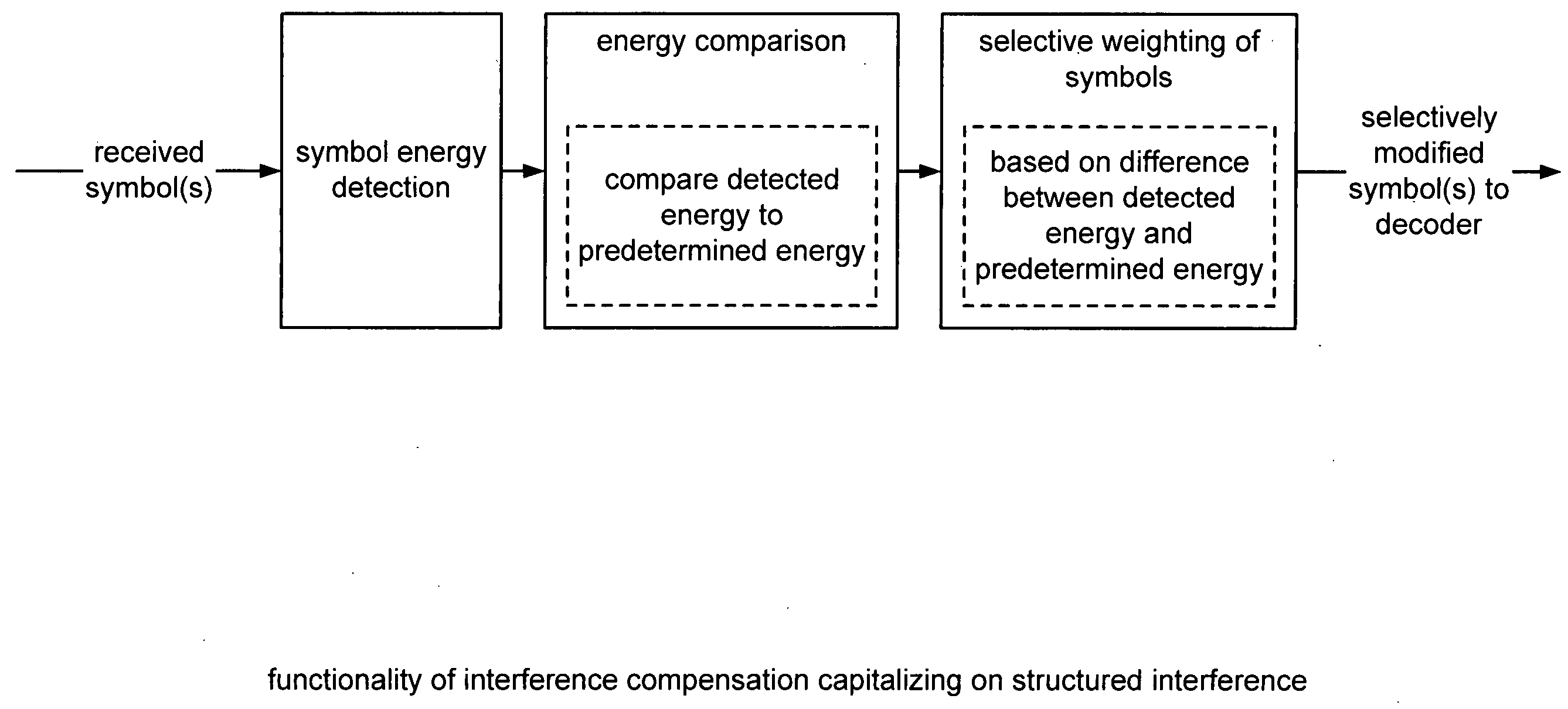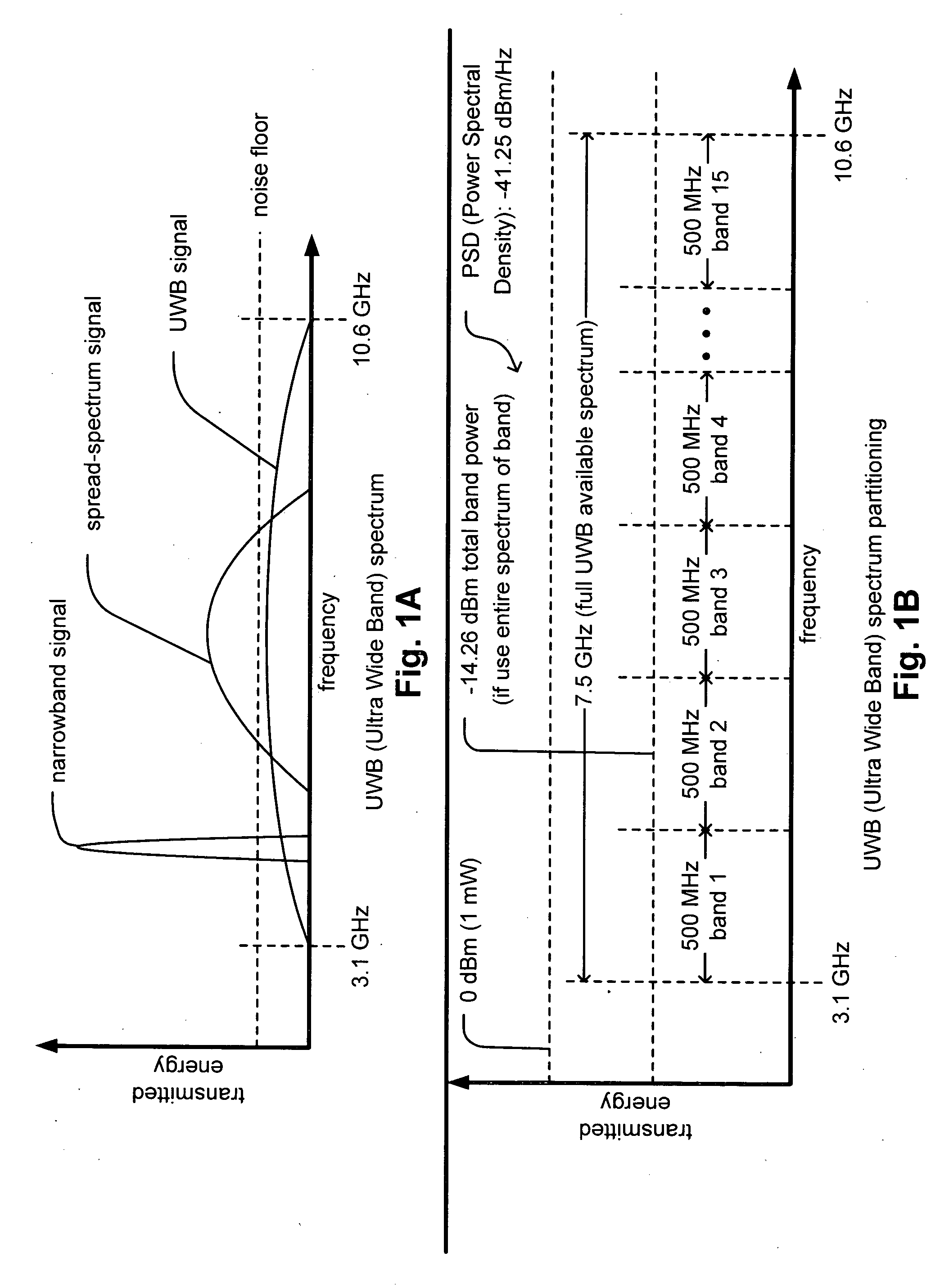UWB (Ultra Wide Band) interference mitigation
a wide band, interference-reducing technology, applied in the field of communication systems, can solve the problems of not being implemented, large synchronization, and difficult to achieve, and achieve the effect of reducing the number of synchronizations
- Summary
- Abstract
- Description
- Claims
- Application Information
AI Technical Summary
Benefits of technology
Problems solved by technology
Method used
Image
Examples
Embodiment Construction
FIG. 1A is a diagram illustrating an embodiment of the frequency spectrum of a UWB (Ultra Wide Band) signal when compared to some other signal types according to the invention. In contradistinction to RF (Radio Frequency) communications that operate by using a narrowband carrier frequency to transmit information, UWB communications operate by sending pulses of energy across a broad frequency spectrum. For example, an RF signal may be viewed as occupying the range of spectra of a narrowband frequency. Also, in contradistinction to a spread-spectrum signal whose intensity (magnitude) generally rises above the noise floor within an available spectrum and also occupies a relatively narrower portion of the available spectrum, a UWB signal may actually be viewed as pulse shaped noise (that may never exceed the noise floor within the available spectrum). A spread-spectrum signal may be viewed as a signal that occupies a frequency band that is much wider than the minimum bandwidth required ...
PUM
 Login to View More
Login to View More Abstract
Description
Claims
Application Information
 Login to View More
Login to View More - R&D
- Intellectual Property
- Life Sciences
- Materials
- Tech Scout
- Unparalleled Data Quality
- Higher Quality Content
- 60% Fewer Hallucinations
Browse by: Latest US Patents, China's latest patents, Technical Efficacy Thesaurus, Application Domain, Technology Topic, Popular Technical Reports.
© 2025 PatSnap. All rights reserved.Legal|Privacy policy|Modern Slavery Act Transparency Statement|Sitemap|About US| Contact US: help@patsnap.com



